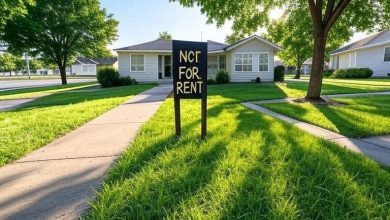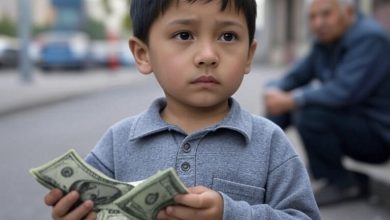Your Perception of War and Death Depends on Your Experiences

When the U.S. bombed three locations in Iran, my initial reaction was a mix of hope and sadness. Hope—because I wished it might lead to a reduction in weapons of mass destruction. Sadness—because of the likely loss of innocent civilian lives and the heightened danger now facing Americans abroad.
I shared these thoughts and feelings in my June 22 newsletter, along with how I planned to respond with my investments. Historically, wars haven’t had a significant long-term impact on the stock market. So if this latest conflict triggers a correction, I said I’d be buying the dip again – if there is one. I also believed that bonds would rally, so hold on to them.

After sending out the newsletter, I received three heated emails (out of ~60,000) from readers who called me misguided, naive, and completely wrong. I’m certainly no expert on Iran and don’t pretend to be. But I didn’t realize that simply sharing how I felt could make me so many things in other people’s eyes.
Never mind that the U.S. State Department issued a “Worldwide Caution” alert for American citizens soon after, warning of potential travel disruptions and demonstrations after the strikes on Iranian nuclear facilities. Never mind that these “forever wars” have lasted for decades and taken thousands of lives.
To these angry readers, my feelings didn’t matter. My desire for peace was dismissed as foolish. If war is what they truly want, I wished them the best—especially if they or their children decide to enlist and act on those beliefs. After all, aligning our actions with our beliefs is part of living an honorable life. To not be congruent would simply be a form of virtue signaling.
Why The Desire For Peace
During middle school in Kuala Lumpur, Malaysia, the Persian Gulf War broke out. On August 2, 1990, Iraq invaded Kuwait for its oil reserves, and the U.S. intervened to liberate Kuwait. Kuwait held about 10% of the world’s oil reserves, and Iraq’s invasion threatened global oil supplies as well as Saudi Arabia, America’s ally at the time.
Operation Desert Storm was a military success, lasting just 43 days, from January 17 to February 28, 1991. Unfortunately, due to aerial bombings, it is estimated that roughly 2,300–3,500 Iraqi civilians were killed. When the news spread, the Malaysian media and some of my friends began to sour on the U.S.
Malaysia, being a Muslim-majority country, had to balance its support for international law with concern for fellow Muslim nations, particularly Iraq. This created tensions in public sentiment and my parents worked for the U.S. embassy. My close friend, a Muslim who was three years older than me, began regularly mocking me, calling me “small brained American” and sometimes worse.
I was 13 years old during the Persian Gulf War and didn’t fully understand what was happening. All I knew was that my close friend suddenly turned against me.
Then we had a bomb threat at my school. We evacuated and didn’t return for several days. My relationship with my close friend was never the same again. I also no longer felt as free as I once did as an American living abroad. I just wanted peace.
More Experiences With War And Terror
In January 2001, I was at the top of the World Trade Center’s North Tower, at the Windows on the World restaurant for the week. Goldman Sachs was holding a Latin America conference, and I was there to help out as a second-year analyst. Then, tragically, the September 11 attacks happened—planes struck both towers, collapsing them and killing nearly 3,000 people.
The attacks were carried out by 19 al-Qaeda terrorists, a radical Islamist extremist group led by Osama bin Laden. Bin Laden opposed U.S. troops stationed in Saudi Arabia, home to Islam’s two holiest sites, after the Gulf War. Al-Qaeda also viewed American support for Israel—especially in the Israeli-Palestinian conflict—as unjust and hostile to Muslims. Finally, the group believed U.S. political, military, and cultural influence was corrupting the Muslim world.
The event was traumatic for so many in the financial services world, as nearly everyone knew someone who was injured or killed, myself included. 10 years after the Gulf War, now as an adult, I was dealing with a tragedy close to home. I lived just several blocks away from the towers at 45 Wall Street before I left for San Francisco with Credit Suisse.
An Even Closer Encounter With Death
Then on November 26, 2008, 10 terrorists from Lashkar-e-Taiba (LeT), a Pakistan-based Islamist militant group, stormed the Oberoi-Trident Hotel in Mumbai, held hostages, and killed 30 people, including several foreign nationals. The same thing happened at the Taj Mahal hotel.
The thing was, I had stayed at the Oberoi-Trident Hotel just two weeks earlier and had also been going to the Taj Mahal Hotel daily to see clients. Credit Suisse had just launched its India research operation, and I was there to meet the team.
What the hell? I immediately wondered whether death was catching up to me.
This latest experience, combined with the Global Financial Crisis, ultimately pushed me to launch Financial Samurai in July 2009. I needed to make sense of the chaos and find a way to escape the corporate grind for good. There had been too many flights, and far too many close calls for comfort.
“We don’t want war. But if you want war with the United States of America, there’s one thing I can promise you, so help me God: Someone else will raise your sons and daughters” is attributed to Medal of Honor recipient David Bellavia. pic.twitter.com/oXEjuyqYiM
— Zeien (@Zeiein) December 27, 2024
The Stakes Have Gone Up As A Parent
Before I had children, the only people I had to think about were myself and the sadness my parents and sister would feel if I died. I don’t want to die, nor do I want anyone I know to die—that’s why I desire peace.
Now that I’m a father, my number one mission is to ensure the safety and survival of my family. When the world edges closer to war, I feel less safe for all of us—especially since we are currently traveling. We must eventually get on a plane, and I often wonder if this flight might be my last.
Some people have asked why I carry life insurance when I could self-insure with my assets.
My answer is simple: having life insurance makes me feel like a responsible parent. It gives me peace of mind knowing that if I die, a tax-free death benefit will go to my wife and children, ensuring their lives go on uninterrupted financially. This means my wife won’t need to sell the house or the car, and our two kids won’t have to be pulled out of school.
The death of a spouse or parent is already deeply destabilizing. Adding financial instability on top of that is both punishing and unnecessary. Getting life insurance is an act of kindness for your loved ones. So is putting together a death file, will, or even better, a living trust.
If you’re looking for an affordable life insurance policy, check out Policygenius, the #1 marketplace to shop for term life insurance in one place. My wife and I both secured matching 20-year term life insurance policies during the pandemic, and it’s been a huge relief. With mortgage debt and two young ones to care for, protecting our loved ones has never felt more important.
Peace, War, Death, Love
Peace is more than just the absence of war—it is the foundation upon which families, friendships, and communities thrive. From my early experiences as a young American abroad to facing terrorism firsthand as an adult, I’ve come to understand that peace is both fragile and precious.
Peace is what allows us to live freely and love deeply without the constant shadow of fear. My hope is that by cherishing peace and preparing responsibly, we can protect what matters most: the safety and well-being of those we love.
Call me naive, misguided, or a fool for wanting peace—but that doesn’t make my feelings about war and death any less real. Maybe there won’t ever be another terrorist attack from the Middle East out of revenge. I doubt it. The forever war in the region continues, and we’re once again entangled in it.
Stay safe everyone!
Readers, what are your thoughts and experiences on death and war? Have you ever had a close encounter? Do you believe escalating bombings in Iran will lead to a peace agreement, or only deepen the conflict? And with rising geopolitical tensions, how are you planning to invest during this latest round of instability?
How to Protect Yourself and Build More Wealth
If you’re looking for an affordable life insurance policy, check out Policygenius, the #1 marketplace to shop for term life insurance in one place. My wife and I both secured matching 20-year term life insurance policies during the pandemic, and it’s been a huge relief. With mortgage debt and two young ones to care for, protecting our loved ones has never felt more important.
Pick up a copy of my USA TODAY national bestseller, Millionaire Milestones: Simple Steps to Seven Figures. I’ve distilled over 30 years of financial experience to help you build more wealth than 94% of the population—and break free sooner.
Subscribe To Financial Samurai
Listen and subscribe to The Financial Samurai podcast on Apple or Spotify. I interview experts in their respective fields and discuss some of the most interesting topics on this site. Your shares, ratings, and reviews are appreciated.
To expedite your journey to financial freedom, join over 60,000 others and subscribe to the free Financial Samurai newsletter. You can also sign up to get my posts sent to your inbox as soon as they come out by clicking here. Financial Samurai is among the largest independently-owned personal finance websites, established in 2009. Everything is written based on firsthand experience and expertise.




